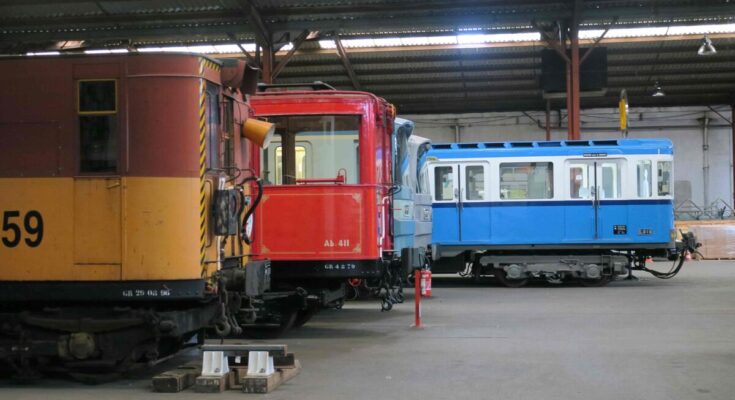This is news that should delight all kinds of railway enthusiasts: more than a century of history of public transport in the Ile-de-France region will be brought together, in 2032, in a hall of 12,000 square meters, located in the maintenance workshops of Championnet (18th century Paris).
A place rich in meaning because, since the end of the 19th century, it belonged to the Compagnie Générale des Omnibus and then to the Paris Metropolitan Railway, before returning to RATP.
The latter has just announced that this future museum will be based on its extraordinary collection: about a hundred vehicles, including platform buses, Sprague-Thomson trains – made entirely of metal – or replicas of the original wooden trains of line 1. In addition, thousands of objects (enamel plaques, decorative elements and signs), accompanied by 260,000 photographs and about 9,000 films!
Strong public expectations
This newly launched project – put forward by former RATP boss and former Prime Minister, Jean Castex in 2023 – still has to go through various stages: study, design, scenography, workmanship and transfer of these Parisian heritage treasures, most of which are kept in the Villeneuve-Saint-Georges (Val-de-Marne) marshalling yard, open to the public during the European Heritage Days and the European Nights museum only.
“Every year, these meetings are stormed. There is real hope, not only from the residents of Ile-de-France. Therefore, this museum will make these collections more accessible,” reports Agnès Desmarest-Coulon, head of corporate communications and brand for the RATP group, who estimates 300,000 visitors per year.
More than a century of progress
This project, the cost of which is not yet known, will fill the gap between the City of Lights and many metropolitan cities that have dedicated a place to their transportation history.
In Stockholm, the capital of Sweden, famous for the beauty of its metro stations, the Sparvagsmuseet was inaugurated in 1944. This museum, with around sixty trains, buses and trams spread over four floors, also has a mini metro accessible to children, which circulates alongside its collection.
Another interesting site: the New York Transit Museum, created in 1976. Located in Brooklyn, in a former station built in the 1930s, it also has something extra: rows of turnstiles from different eras, which bear witness to the evolution of New York’s foyer. Visitors can sit aboard the carriages, some of which date from the early 20th century.
And to admire one of the first underground electric trains, unveiled in 1890, head to the London Transport Museum, in the former Covent Garden flower market.
Its steam-powered predecessor is also on display, a unique testament to the world’s first metro, which was born in 1863 in London. In this Victorian building, it is impossible to miss the first model of the bright red double decker bus, the symbol of the British capital.
Many other cities could be mentioned: Lisbon, Berlin, Madrid, Budapest, Vienna, Kyoto… And soon Paris, which is preparing to close the trains.



